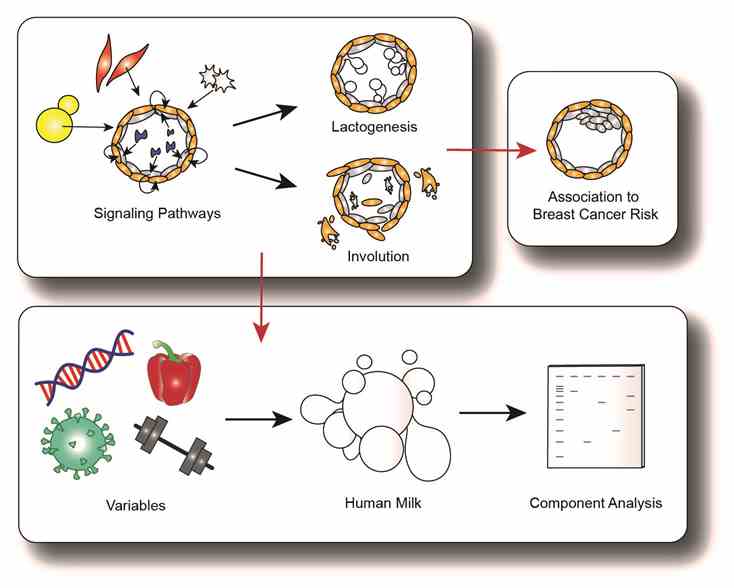Potential of 3D Human Breast Organoid Models in Advancing Lactation Research
Published 30 November, 2023
The 3D human breast organoid model represents state-of-the-art technology that “floats” patient-derived or stem cell-derived human breast tissue in a gel-like substance known as the matrix. The model improves the reproduction of native human breast tissue in a laboratory setting and allows researchers to study the cellular and molecular character of human breast tissue at various stages of development.
In a review paper published by the KeAi journal Reproduction and Breeding, a team of researchers describe current mammary organoid research and potential studies that could be done using 3D breast organoid models.
"Many studies used mouse mammary glands to study the human mammary gland, but the mouse mammary gland is very different from human mammary glands in various aspects, such as development and chemical signaling pathways,” shares Jenny Lee, lead author of the paper. “Hence, human breast organoid models are needed to further understand the human mammary gland, including processes associated with lactation.”
Previous studies have found that human breast organoid models form structures characteristic of human breast tissue, maintain various mammary gland cell subtypes, express important breast tissue protein markers, and respond to hormone or drug treatments. For instance, a study by Qu et al. revealed that the introduction of lactation medium induced the expression of milk proteins within these organoids. Sumbal et al. further extended these findings, demonstrating that lactation medium not only induced potential milk production in breast organoids but also established that the withdrawal of lactation medium could trigger involution-like activity.
"By using 3D breast organoids, we can delve deeper into the intricate cellular and molecular processes of lactogenesis, the post-pregnancy transformation of milk-secreting cell specialization and milk production, as well as involution—the regression of the lactating mammary gland to its pre-pregnancy state,” says Lee.
The authors believe that breast organoids may even contribute to refining human milk formula to cater to specific nutritional requirements, ensuring the healthy growth of infants.

Contact author details: Jenny Lee, The University of California Los Angeles, College of Letters and Science, CA, 90048, USA, jennyflee@ucla.edu, www.linkedin.com/in/jennyforestlee
Funder: Xiaojiang Cui is supported by National Institutes of Health (2R01CA151610 and R21CA280458), Department of Defense (W81XWH‐18‐1‐0067), and Samuel Oschin Cancer Institute Research Development Fund. Armando E. Giuliano is supported by the Fashion Footwear Charitable Foundation of New York, Inc, the Margie and Robert E. Petersen Foundation, and Linda and Jim Lippman Fund.
Conflict of interest: The authors declare that they have no known competing financial interests or personal relationships that could have appeared to influence the work reported in this paper.
See the article: Lee, J. F., Liu, Y., Ray, E., Giuliano, A. E., & Cui, X., Human breast organoid models for lactation research, Reproduction and Breeding, 3(3) 2023, 125–130. https://doi.org/10.1016/j.repbre.2023.08.003

